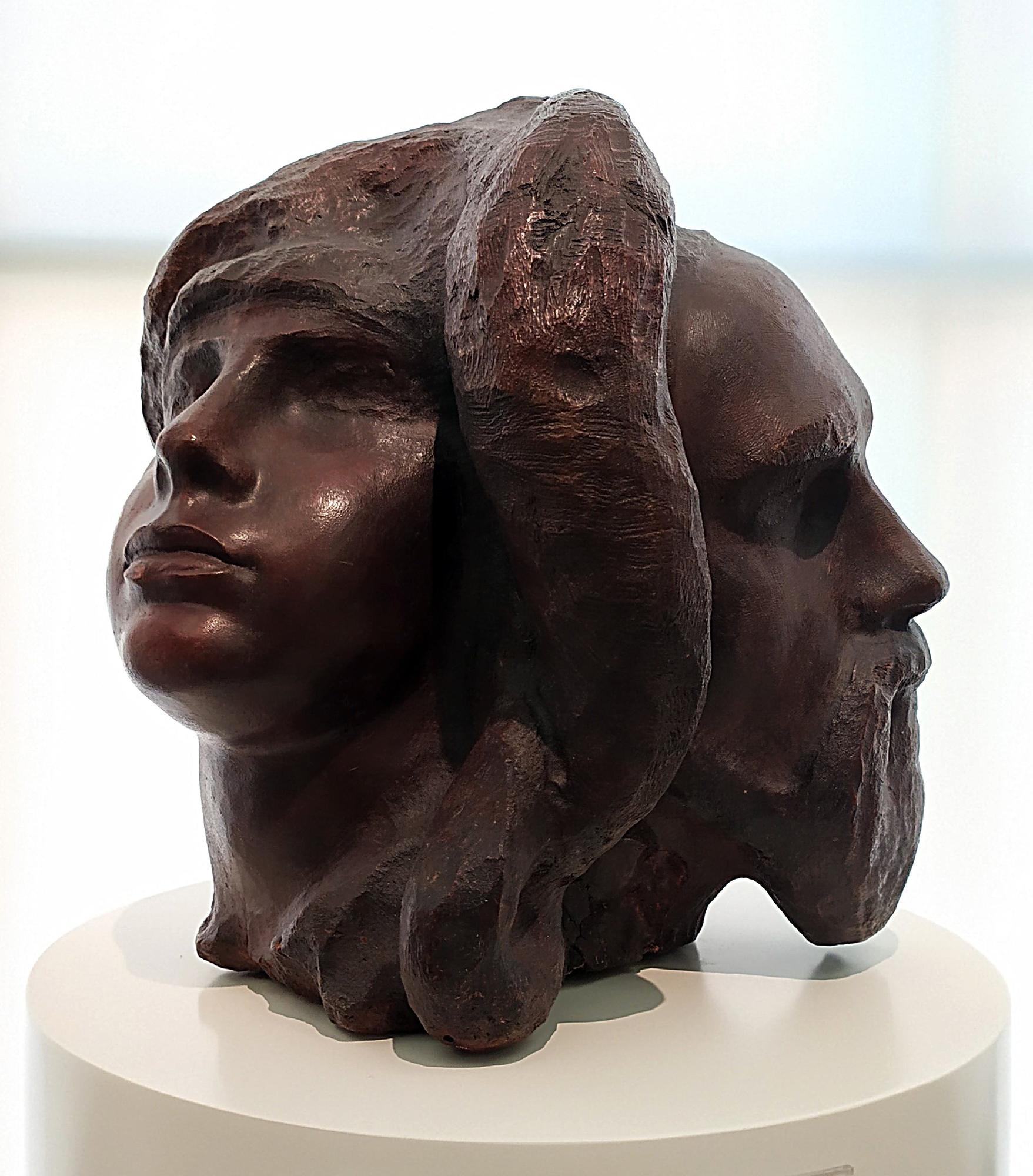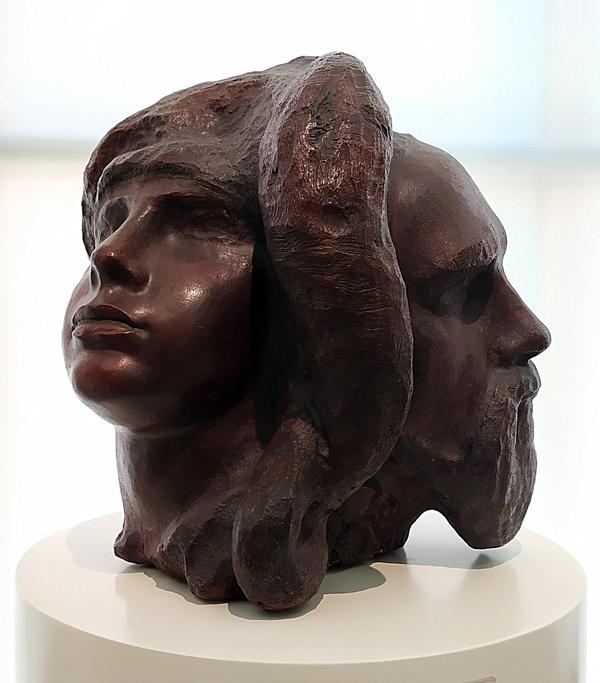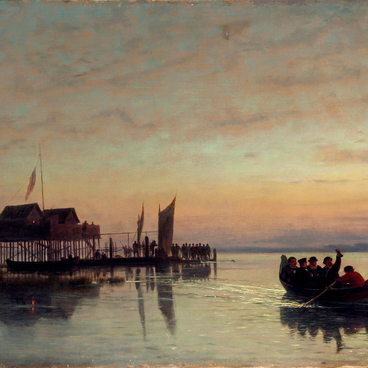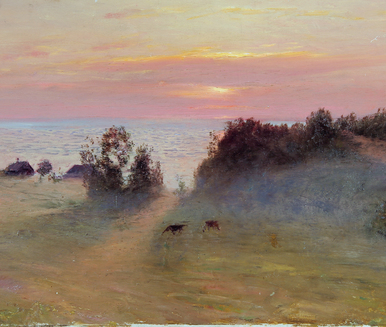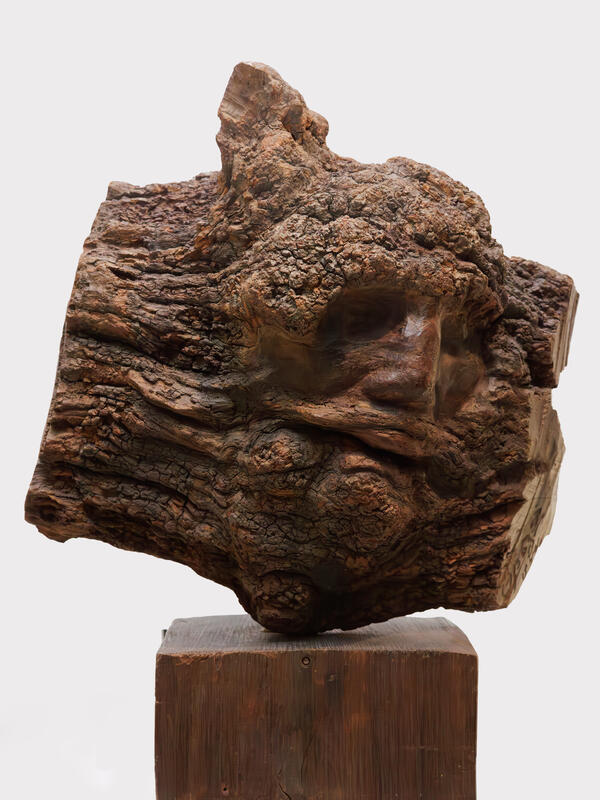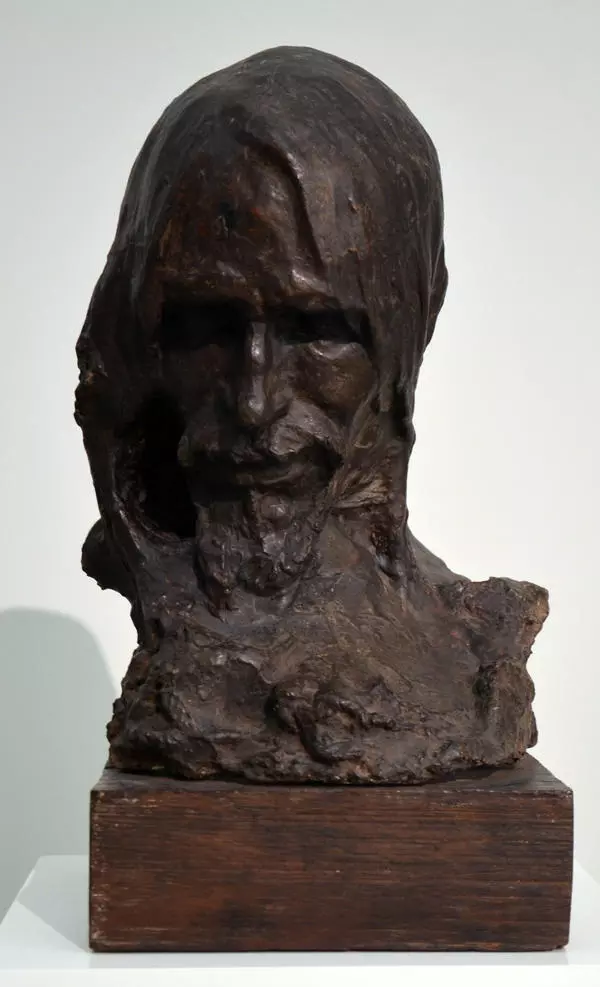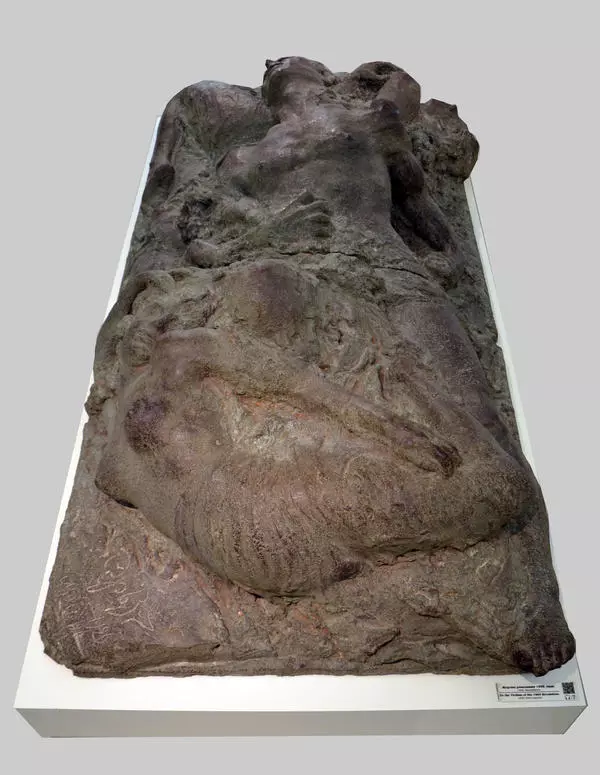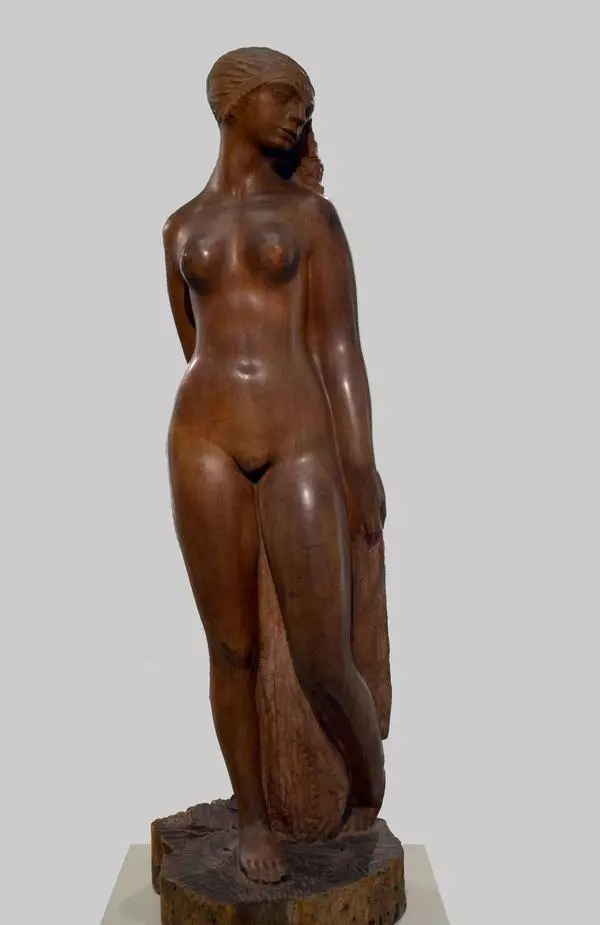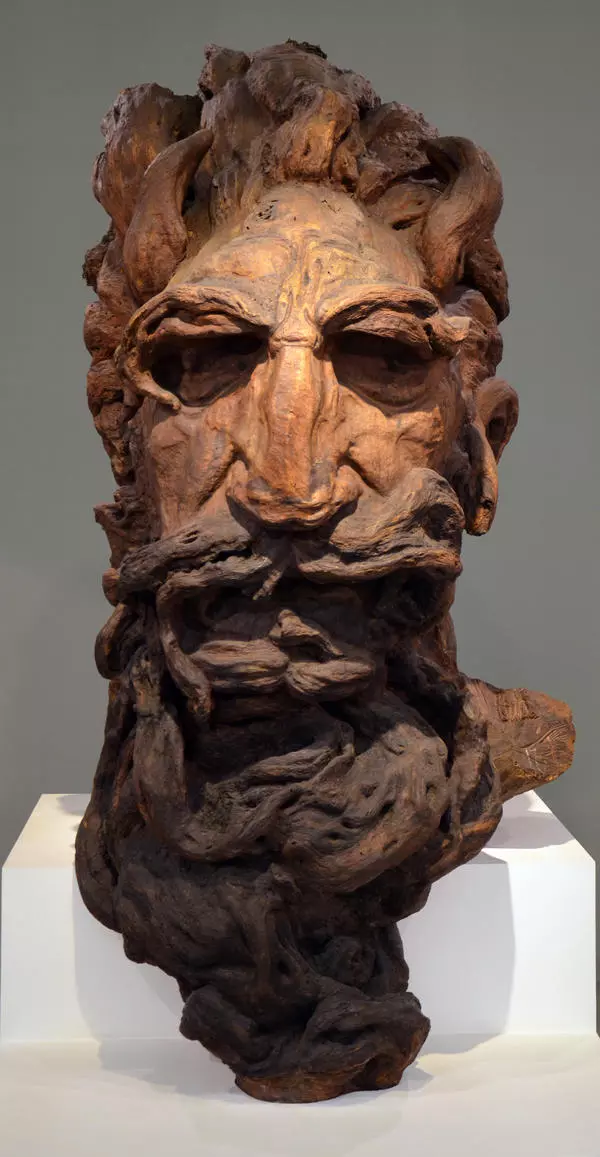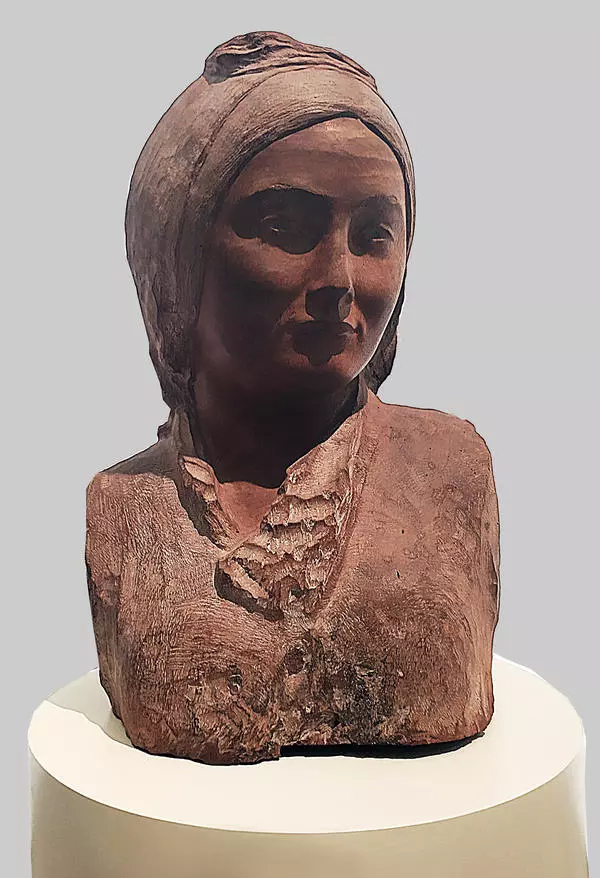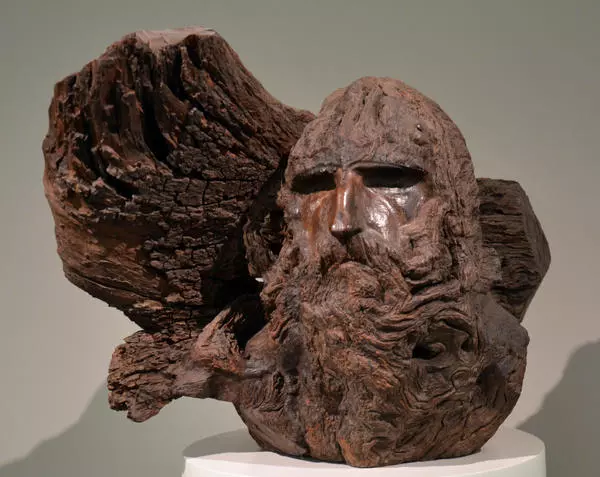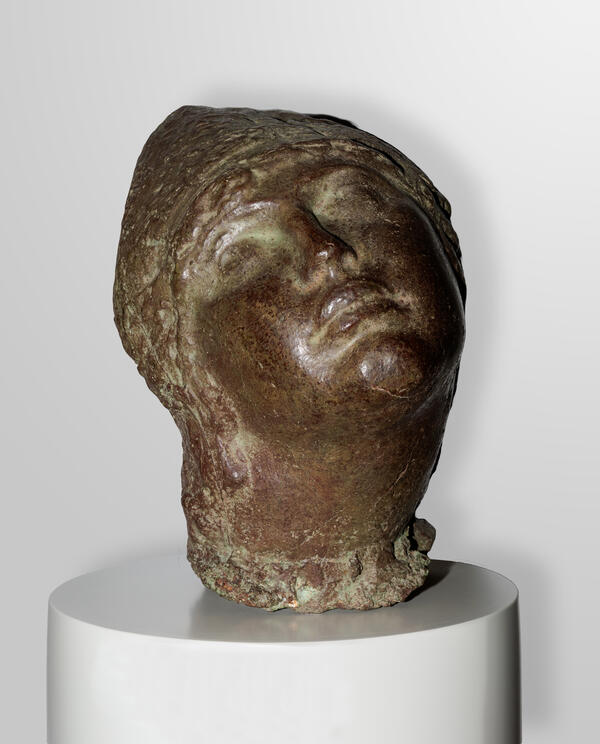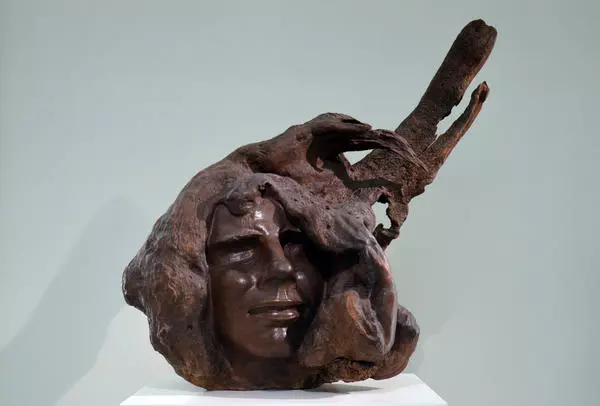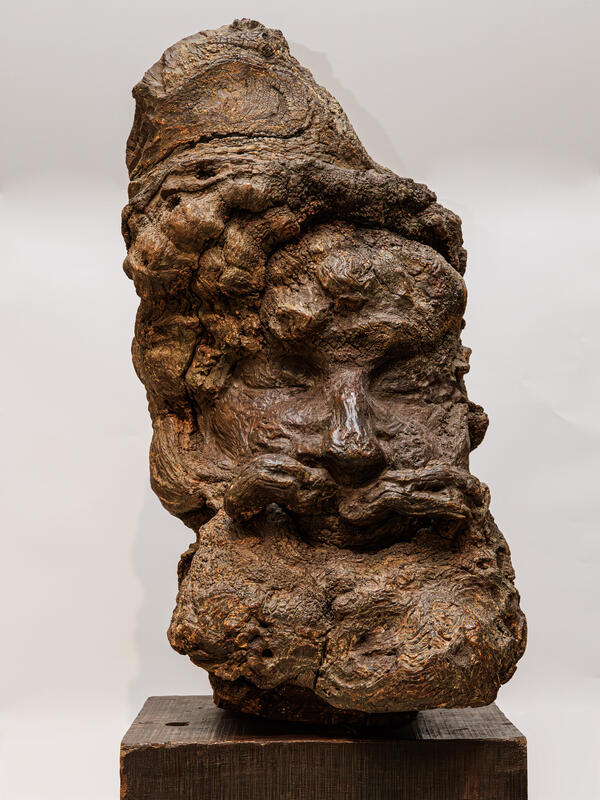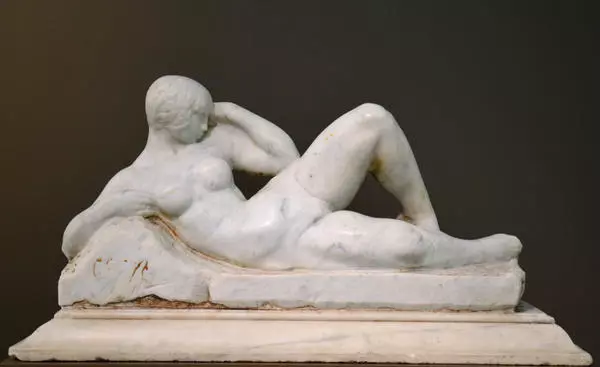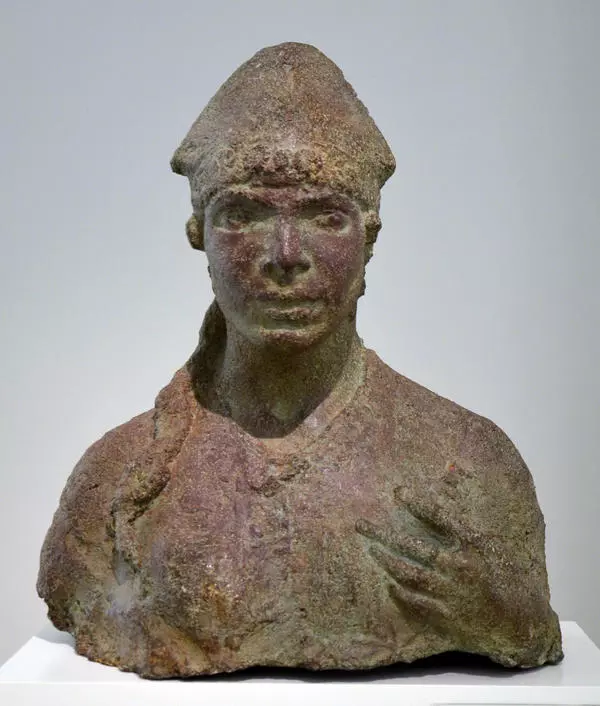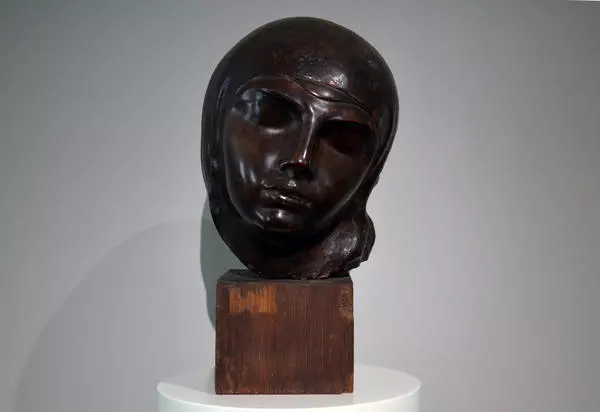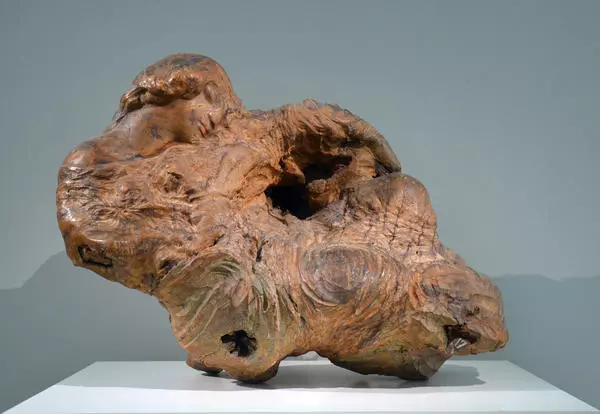Stepan Erzia rarely used the language of sculpture to talk about the most intimate things. And he strived to avoid unnecessary personification of the images. This makes one of his late works, Love, created in 1955 even more valuable and interesting. It portrays the author and his Muse. The images are static, still they are live and plastic, like wood in the hands of an experienced master.
The name of Erzia is inextricably connected with the quebracho and algaroba technique. These are the types of sub-tropical wood that he worked with in Argentina. There remain a lot of his sculptures made of this hard extra strong wood. The material inspired the author to create his main works. He mostly used quebracho. However, over the long period of his life in South America, he also discovered algaroba. It is that unique and almost unworkable wood that his lyric composition Love is made from.
The double sculpture became an evocation of spiritual and ideological unity of a man and a woman. The composition visualizes the idea of the author: love connects inseparably. However, the sculptured characters look in opposite directions. And there is a wall between them. Still, the images show no despair. This rather resembles sweet sadness. The work was created in the twilight of life. The artist depicted himself at a mature age. He knows that classic ‘misalliance’ of youth and maturity.
Unlike most of the sculptor’s works, this composition is not outspokenly expressive. One does not see that lofty romanticism and the feeling of soaring that can be noted in other works by Erzia. Even in terms of image and plastic composition, the sculpture is reserved and elliptical. There are opinions that the author used such presentation trying to fit socialist realism and the Soviet culture space. In the 1950s, he returned to the Soviet Union, which was bound to influence his creative work.
But this technique was most likely chosen to ensure more habitual perception by the broader audience. It was important for the master to express the inner state of the characters via their exterior calmness, and to achieve maximum artistic sincerity. The Love sculpture is also interesting as those are not abstract images of a man and a woman, those are quite real people. Erzia depicts himself in the image of the man, wise from the experience and the years of the master. He has already made the journey of his life and can see its logical end ahead.
And the young girl is looking upwards, she is full of hope. The master chose not to detail out the female image. He created a composite sculptural image with defused generalized features. However, researchers believe she resembles the woman he loved and lived with in Paris. She did not know a word of Russian, and Erzia did not speak French. But there are no obstacles for the language of love. They had no family, for he was always ‘married’ to his sculptural art. Time and again at the end of his life, the master felt some regret about the missed opportunities.
The Love sculpture can be considered in different contexts. This is the visualization of the idea of the Creator and the Muse, the Man and the Woman, Youth and Maturity. Still, all those ideas are inseparable, same as the characters of the composition.
The name of Erzia is inextricably connected with the quebracho and algaroba technique. These are the types of sub-tropical wood that he worked with in Argentina. There remain a lot of his sculptures made of this hard extra strong wood. The material inspired the author to create his main works. He mostly used quebracho. However, over the long period of his life in South America, he also discovered algaroba. It is that unique and almost unworkable wood that his lyric composition Love is made from.
The double sculpture became an evocation of spiritual and ideological unity of a man and a woman. The composition visualizes the idea of the author: love connects inseparably. However, the sculptured characters look in opposite directions. And there is a wall between them. Still, the images show no despair. This rather resembles sweet sadness. The work was created in the twilight of life. The artist depicted himself at a mature age. He knows that classic ‘misalliance’ of youth and maturity.
Unlike most of the sculptor’s works, this composition is not outspokenly expressive. One does not see that lofty romanticism and the feeling of soaring that can be noted in other works by Erzia. Even in terms of image and plastic composition, the sculpture is reserved and elliptical. There are opinions that the author used such presentation trying to fit socialist realism and the Soviet culture space. In the 1950s, he returned to the Soviet Union, which was bound to influence his creative work.
But this technique was most likely chosen to ensure more habitual perception by the broader audience. It was important for the master to express the inner state of the characters via their exterior calmness, and to achieve maximum artistic sincerity. The Love sculpture is also interesting as those are not abstract images of a man and a woman, those are quite real people. Erzia depicts himself in the image of the man, wise from the experience and the years of the master. He has already made the journey of his life and can see its logical end ahead.
And the young girl is looking upwards, she is full of hope. The master chose not to detail out the female image. He created a composite sculptural image with defused generalized features. However, researchers believe she resembles the woman he loved and lived with in Paris. She did not know a word of Russian, and Erzia did not speak French. But there are no obstacles for the language of love. They had no family, for he was always ‘married’ to his sculptural art. Time and again at the end of his life, the master felt some regret about the missed opportunities.
The Love sculpture can be considered in different contexts. This is the visualization of the idea of the Creator and the Muse, the Man and the Woman, Youth and Maturity. Still, all those ideas are inseparable, same as the characters of the composition.
